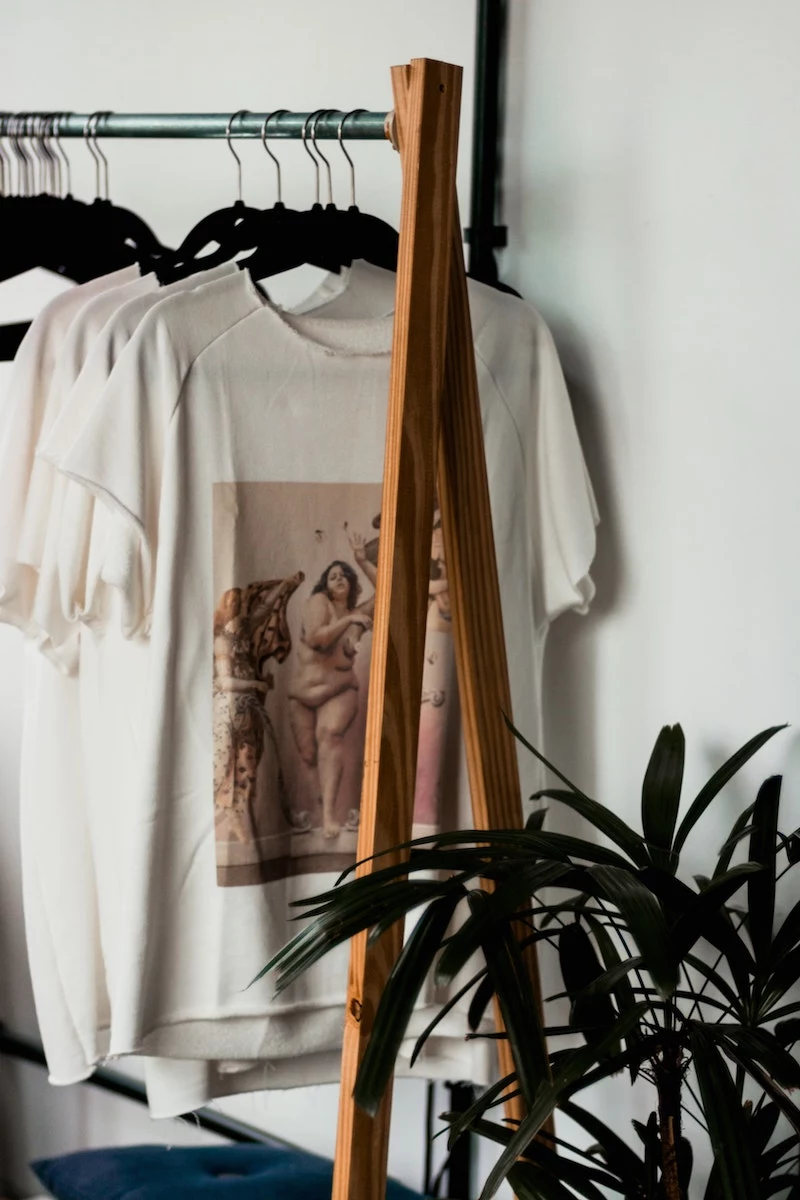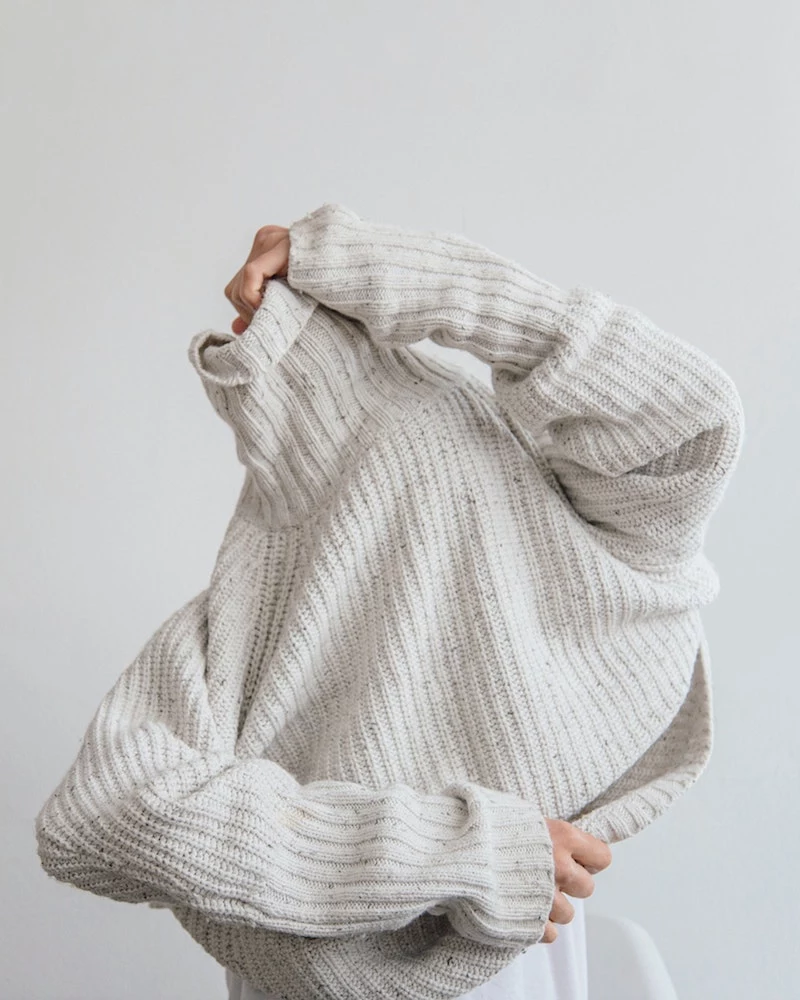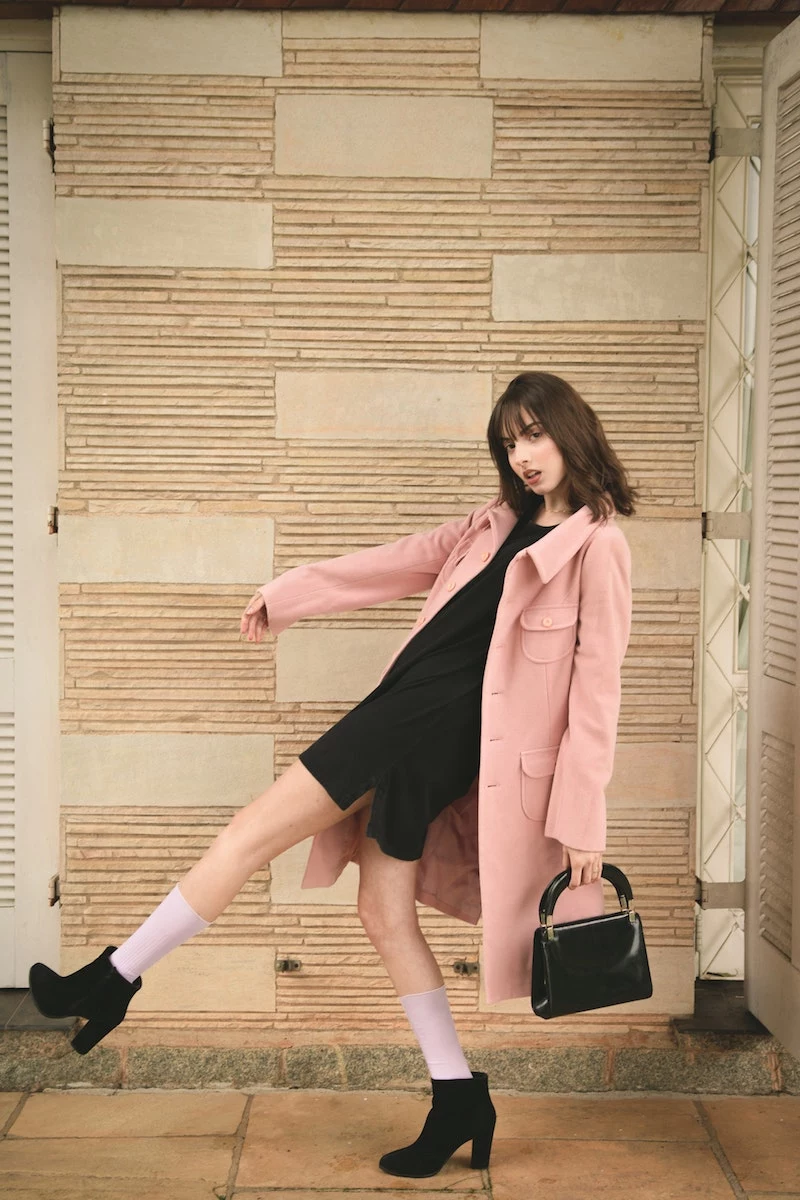Why Your Clothes Don’t Fit (And How to Fix It): A Real-Talk Guide to Fabric and Comfort
Ever have one of those days? You put on a shirt that constantly pulls at your shoulders. Or a pair of pants where one leg seems to mysteriously twist around your shin by lunchtime. It’s maddening. For decades, I’ve been on the inside of the clothing world, from making patterns to consulting for brands, and I’ve seen the same problem over and over: clothes that fight the people wearing them.
In this article
Fashion often tells us we have to choose between looking good and feeling good. I’m here to tell you that’s a myth. Real style, the kind that lasts, comes from the confidence you feel when you’re not constantly fidgeting with your outfit. The secret isn’t about chasing trends; it’s about understanding how your clothes are actually made.
Honestly, it all boils down to three things: the fabric, the cut, and how it’s all stitched together. Once you get a handle on these, you can look at a rack of clothes in a whole new way and build a wardrobe that actually works for you.

It All Starts with Fabric
The material is, without a doubt, the most important piece of the puzzle. It’s what’s against your skin all day, and it dictates how you move, breathe, and feel. Mass-market fashion often skimps here to save a few bucks, but knowing the difference is your first step to a better wardrobe.
Natural Fibers: The Tried-and-True Classics
These come from plants and animals, and there’s a reason they’ve been our go-to for centuries. They just have properties that synthetics can’t perfectly replicate.
- Cotton: This is the friendly workhorse of fabrics. It’s breathable, soft, and strong. Its only real downside is that it soaks up moisture and gets heavy, so it’s not great for a super sweaty workout. The Touch Test: When you’re shopping, feel the difference. Cheap cotton feels thin and a bit rough. High-quality cottons, like Pima or Egyptian, feel incredibly smooth, dense, and almost cool to the touch. Quick Care Tip: To avoid shrinking your favorite tee, wash it in cold water and tumble dry on low—or better yet, hang it to dry.
- Linen: Made from the flax plant, linen is a summer superstar. The fibers are hollow, which literally lets air pass right through, creating a natural air conditioning effect. It’s super strong and just gets softer the more you wash it. Yes, it wrinkles like crazy, but that’s part of its charm, not a flaw! Quick Care Tip: Machine wash on a gentle cycle and hang it to dry. Don’t fight the wrinkles; just embrace the relaxed look.
- Wool: Wool is a performance fiber designed by nature. Its fibers have a natural crimp that creates tiny air pockets, making it a fantastic insulator for both heat and cold. It can absorb a ton of moisture before it even starts to feel damp, and it’s naturally odor-resistant. If you think wool is itchy, you’ve probably only worn the cheap, coarse stuff. Fine merino wool is buttery soft and perfect for next-to-skin layers. Quick Care Tip: This is important! Never wash wool in hot water or put it in a hot dryer unless you want a sweater for your cat. Hand wash with a gentle detergent or use the wool cycle on your machine, and always lay it flat to dry.
- Silk: Known for its gorgeous drape and luster, silk is also surprisingly strong. It’s a great temperature regulator, keeping you cool in the heat and warm in the cold. It’s delicate, so it does require a bit more care. Quick Care Tip: For most silk, gentle hand-washing in cool water is your best bet. Avoid the dryer at all costs.

Man-Made Fibers: The Good, The Bad, and The Sweaty
These are created in a lab, either fully from chemicals or from natural materials that are chemically processed.
- Polyester & Nylon: Let’s be frank: these are plastic threads. They’re super durable, wrinkle-resistant, and cheap, which is why fast fashion loves them. The huge downside? They don’t breathe. At all. Wearing a 100% polyester shirt is like wrapping yourself in a plastic bag—it traps heat and sweat, which is a perfect recipe for feeling gross and smelly.
- Rayon, Viscose, Modal & Lyocell: These are a bit different. They’re semi-synthetic, starting their life as wood pulp before being chemically processed. They’re known for being incredibly soft with a fluid, silky drape, which makes them great for blouses and dresses. Standard production can be rough on the environment, but newer forms, like lyocell, use a more sustainable, closed-loop process. They offer a great balance of feel and affordability.

Weave vs. Knit: It’s All in the Structure
How those fibers are turned into fabric changes everything. A woven fabric is made like a basket, with threads interlaced at right angles. This makes it strong and stable with very little stretch. Think of denim, crisp button-down shirts, and blazers. They provide structure.
A knit fabric, on the other hand, is made from a single yarn looped together, just like a hand-knitted sweater. This structure gives it natural stretch and flexibility. Your t-shirts, sweatshirts, and leggings are knits. They provide comfort and movement. Problems start when brands use a cheap, non-stretch woven for a garment that really needs the give of a knit.
Shopping Smarter: Decoding Tags and Budgets
Okay, armed with that knowledge, let’s make it practical. Here’s how you can use this on your next shopping trip.
How to Read a Garment Tag Like a Pro
That little tag is your cheat sheet. Let’s say you see a pair of jeans labeled “95% Cotton, 5% Elastane.” What does that actually mean for you? It means you’re getting the best of both worlds. The 95% cotton provides that classic denim feel and breathability. That 5% elastane (which you might also see as Spandex or Lycra) is the magic ingredient that gives the jeans stretch, comfort, and the ability to hold their shape without getting baggy at the knees. A 100% cotton jean will be more rigid, while a blend with 20% polyester will be less breathable.

The Splurge vs. Save List
Building a quality wardrobe doesn’t mean everything has to be expensive. It’s about being strategic. Here’s a good rule of thumb:
- Splurge on: The foundational pieces you’ll wear for years. A well-made wool coat, a classic leather jacket, a great-fitting pair of jeans, and timeless footwear. These are investments.
- Save on: The fun, trendy stuff that might not be in style next year. A colorful summer top, basic t-shirts, and most workout clothes (since they take a beating anyway).
The Secrets of a Great Fit: Cut and Construction
A beautiful fabric can be totally ruined by a bad cut. This is where you can really spot the difference between quality and cheap shortcuts.
The Grainline: A Garment’s Secret Foundation
Every woven fabric has a grain, which is the direction the threads run. Cutting pattern pieces along this grain is rule number one, ensuring the clothes hang straight and don’t warp. To save money, mass manufacturers will sometimes tilt the pattern pieces to cram more onto a single bolt of fabric. This is why you get that twisting pant leg! I once had a client bring me pants where, after one wash, the side seam was practically on her shin. All to save maybe fifty cents on fabric. Don’t let it happen to you!

Shaping the Garment: Darts, Seams, and Gussets
Our bodies have curves, and good clothing accounts for that. Look for these signs of quality shaping:
- Darts: These are little sewn-in folds that take in fabric to create shape, usually around the bust or waist. Boxy, cheap clothes often leave them out to save time.
- Princess Seams: These long, curved seams create a very smooth, flattering fit without needing darts. They are a sign of more thoughtful construction.
- Gussets: A small patch of fabric (often diamond-shaped) added to high-stress areas like the crotch of pants or under the arm of a jacket. It provides extra room and prevents seams from ripping.
The Inside Story: How to Judge a Seam
Want a quick way to assess quality? Turn a garment inside out. A messy, unraveling seam is a huge red flag.
Here’s a fun little exercise. Go grab your favorite pair of jeans. Right now. Look at the long seam running down the inside of the leg. See that super-thick, durable seam that’s stitched down flat? That’s called a flat-felled seam. It’s built to last. On a delicate blouse, you might see a French seam, where the raw edge is neatly tucked away inside the seam itself. It’s beautiful and feels smooth against the skin. Both are signs that the maker cared about the details.
Making It Work for You: Practical Solutions
The Power of a Good Tailor (And a Little DIY)
This is the single best-kept secret to an amazing wardrobe. Almost no one fits off-the-rack clothing perfectly. A tailor can make a $60 pair of pants look like they were custom-made.
Common, affordable alterations include hemming pants or sleeves ($15-$25), taking in the waist of trousers or jeans ($25-$45), or adding darts to a shirt for better shaping ($20-$35). What’s hard to fix? The shoulders of a jacket. Think of the shoulders as the hanger for the whole garment; changing them is major surgery.
On a budget? You can do some of this yourself! For hemming pants, you can buy iron-on hemming tape for about $5 at any craft store. It’s a no-sew solution that works wonders. To take in the waist of a simple cotton dress or shirt, even a basic running stitch sewn by hand on the inside can make a world of difference.
Thrifting Like a Pro
Secondhand shops are treasure troves if you know what you’re looking for. Older garments were often made with better materials and more care. Use your hands! Feel for high-quality natural fibers. Check the tags for wool, silk, and linen. Look inside for those well-finished seams. You can often find a vintage wool blazer for less than a new polyester one at a big-box store.
A Final Word on Safety and a Quick Challenge
One last thing. If you have sensitive skin, your clothes could be the problem. Many fabrics are treated with chemicals like formaldehyde to make them wrinkle-free, and some dyes can be serious irritants. Because of this, my number one safety tip is to ALWAYS wash new clothes before you wear them. It’s a simple step that rinses away a lot of the residual chemicals.
For extra peace of mind, look for clothing with reputable third-party certifications. Some labels verify that every part of the garment has been tested for a long list of harmful substances, while others guarantee that the fibers are organic and produced in an ethical way.
Building a wardrobe you love is a journey, not a destination. But when your clothes feel good, you just carry yourself differently. You can forget what you’re wearing and get on with your life.
So, here’s my challenge for you this week: Find one item in your closet that you secretly hate. You know the one—it’s probably 100% polyester, it’s itchy, or it just fits weird. Get rid of it. Donate it, toss it, whatever. Just get it out of your space. See how good it feels to let go of something that causes even minor discomfort. That’s the first step.
Inspirational Gallery
Tencel™ Lyocell: A modern marvel made from wood pulp in a closed-loop system. It feels incredibly silky, drapes beautifully, and is more absorbent than cotton, making it fantastic for basics from brands like Tentree or Allbirds.
Pima Cotton: A high-end natural fiber known for its extra-long staples, resulting in a fabric that’s exceptionally soft, durable, and resistant to pilling. It’s a true upgrade for your classic tees and sheets.
While both offer superior softness, Tencel™ often wins on silky feel and sustainability, while Pima cotton is the champion of durable, classic crispness.
It can take up to 2,700 liters of water to produce the cotton needed for a single T-shirt.
That staggering figure highlights the environmental footprint of our closets. This is why understanding fabrics goes beyond comfort—it’s about making conscious choices. Opting for less thirsty crops like linen, or choosing garments made from certified organic cotton, can significantly reduce your wardrobe’s impact on the planet.
There’s a unique satisfaction in breaking in a pair of raw denim jeans from a heritage brand like A.P.C. or Nudie Jeans. They start off rigid, almost like armor. The first few weeks are a battle of wills. But slowly, with every wear, they soften and mold to your body, creating custom fades and creases that tell the story of your movements. It’s the ultimate expression of clothing that becomes truly yours.
- Stitch Density: Look for small, tight, and even stitches. More stitches per inch generally means a stronger seam.
- Seam Puckering: Lay the garment flat. If the seams are wavy or puckered, it’s a sign of poor tension during sewing.
- Finished Edges: Check inside. Quality garments have serged or bound edges to prevent fraying, not just a simple cut edge.
What’s the big deal about ‘drape’?
Drape is how a fabric hangs and falls under its own weight, and it’s the secret sauce behind a garment’s silhouette. A fabric with fluid drape, like silk or viscose, will skim the body and create soft, flowing lines. A fabric with a stiff drape, like heavy canvas, will hold its own shape for a more structured look. Neither is better—it’s about matching the drape to the desired fit. A flowy dress in stiff fabric will look bulky, while a structured blazer in flimsy fabric will collapse.
“One size fits all” is one of the greatest myths in fashion. In reality, it usually means “one size fits few.”
Don’t forget ‘wearing ease’: This is the crucial space between your body and the garment, intentionally designed by the pattern maker for movement. A well-fitting garment isn’t skin-tight; it has just enough ease to let you sit, stretch, and breathe without the fabric pulling or straining.
That tiny tag with cryptic symbols sewn into the side seam is your garment’s instruction manual. Ignoring it is the fastest way to ruin a piece you love. Learning to decode it takes just a minute.
- The Washtub: A number inside is the max temperature in Celsius. Dots (one for cold, three for hot) offer a simpler guide. A hand means hand-wash only.
- The Triangle: This is all about bleach. An empty triangle means any bleach is fine. A triangle with diagonal lines means use only non-chlorine bleach.
- The Square: This is for drying. A circle inside means it’s safe for the tumble dryer. Dots indicate the heat level.
- It feels impossibly soft against the skin, with none of the itchiness of standard wool.
- It provides incredible warmth without the bulk, making it perfect for layering.
- When cared for properly, it resists pilling and can last for decades.
The secret? True cashmere. Sourced from the fine undercoat of specific goat breeds, its quality lies in the length and fineness of the fibers. A high-quality knit from a brand like Naadam or Johnstons of Elgin is an investment in pure comfort.
One of the most common wardrobe mistakes is buying for a fantasy life. That sequin dress for a gala you’re not attending, or those stiff leather pants when your life is mostly casual. The most successful wardrobes are built on honesty—an honest assessment of what you actually do and what feels good on your body right now. True style is found in clothes that serve your real life, not an imagined one.










